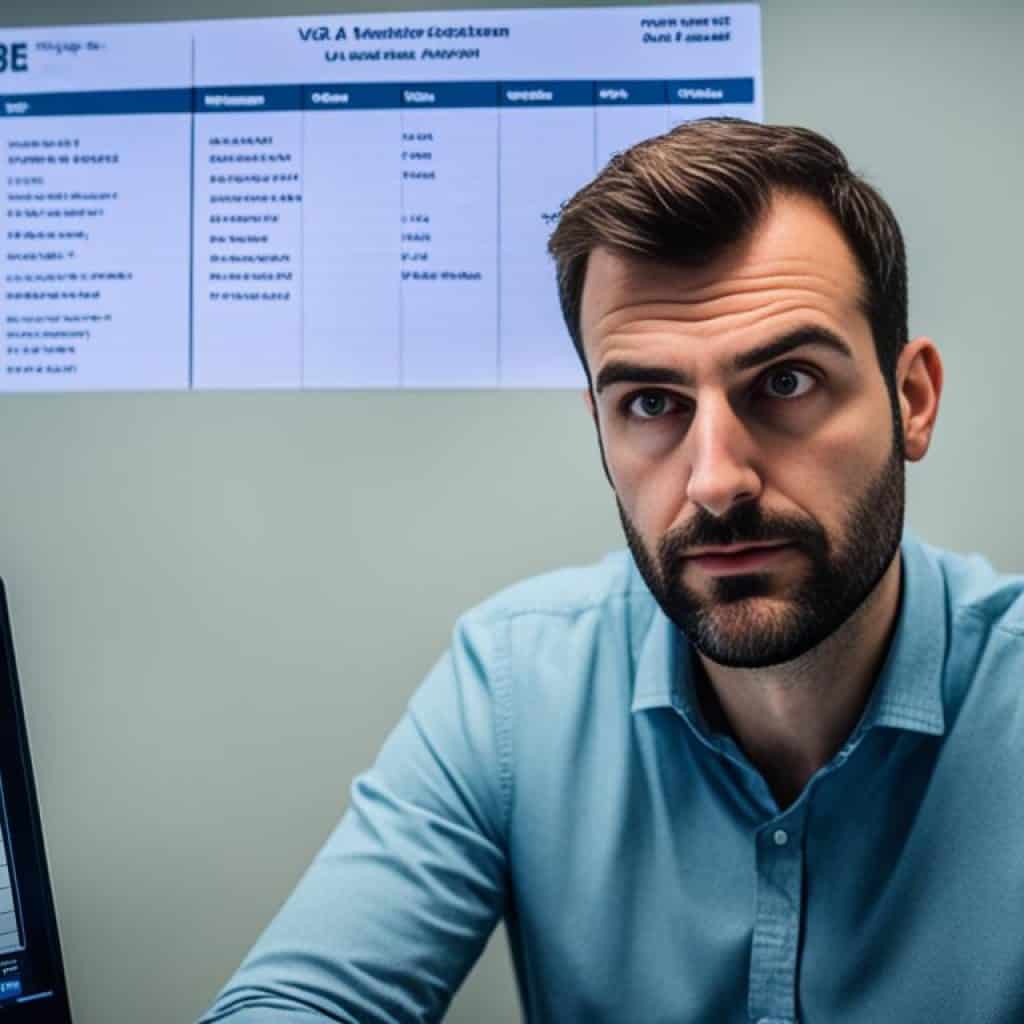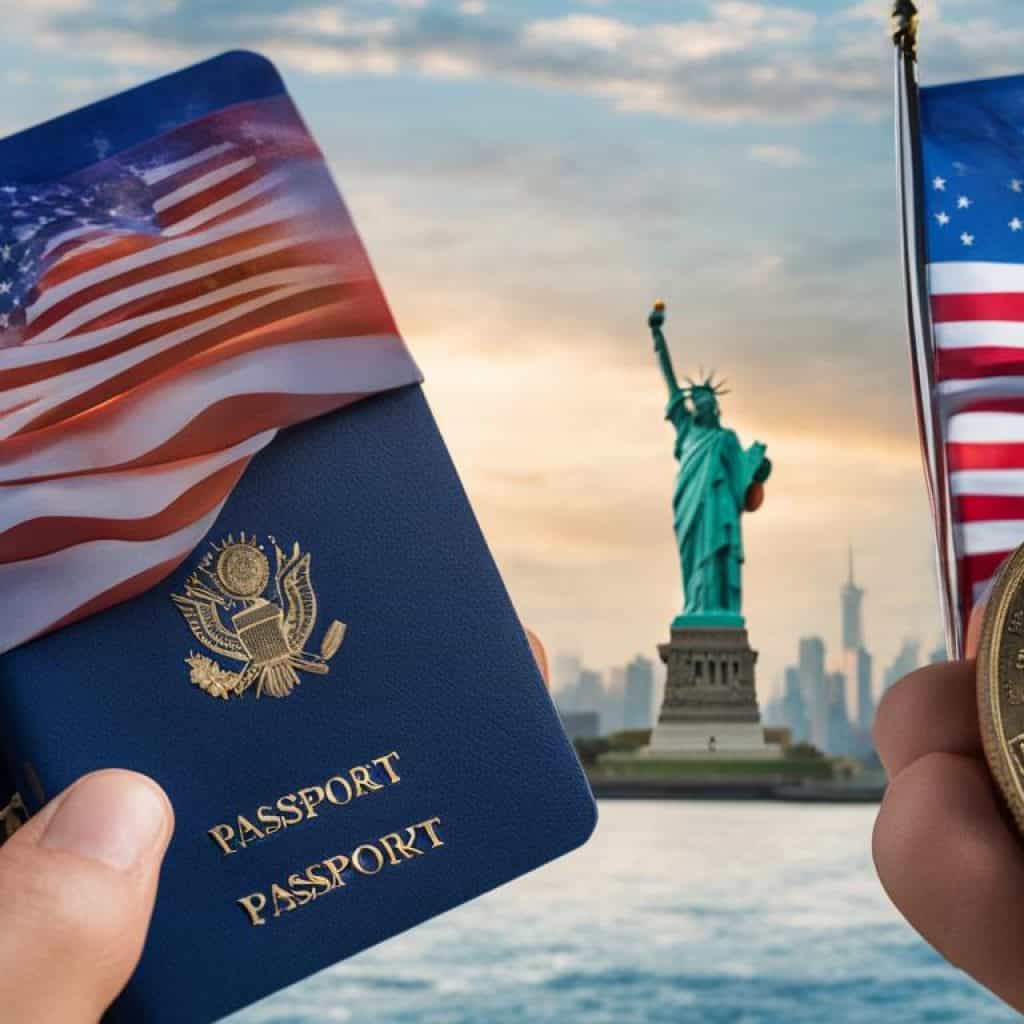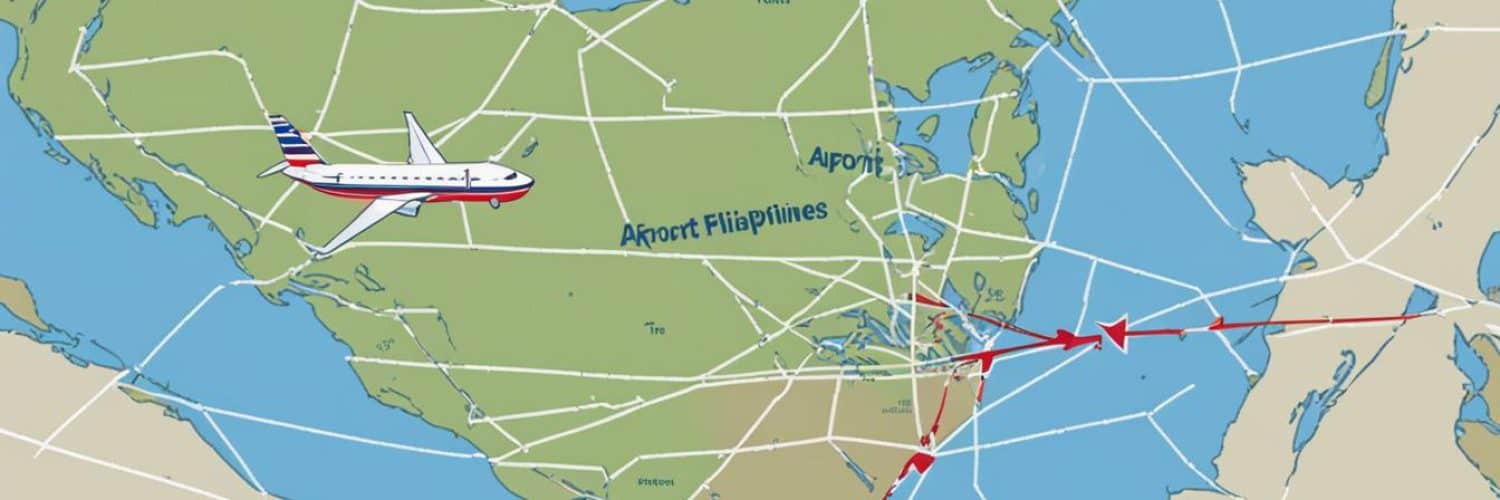Bringing your wife to the United States from the Philippines is an important step in building a life together. Whether you are a U.S. citizen or a permanent resident, there are visa options available to help you reunite with your spouse and start your new chapter in the land of opportunities.
Two main visa options exist for bringing your wife from the Philippines to the USA – the immigrant visa for a spouse of a U.S. citizen (IR1 or CR1) and the nonimmigrant visa for a spouse (K-3). Understanding the requirements and processes for these visas can help you navigate the spouse visa journey with confidence.
For the immigrant visa, you will need to file a Petition for Alien Relative (Form I-130) to establish your relationship with your spouse. This visa category allows your wife to permanently live in the United States as a lawful permanent resident.
If you prefer a faster process, the nonimmigrant visa for a spouse (K-3) can provide your wife with the opportunity to enter the United States while waiting for the processing of the immigrant visa case. To apply for the K-3 visa, you will need to file both Form I-130 and Form I-129F.
Throughout the spouse visa process, there are specific documents that you will need to provide to establish your eligibility and relationship with your spouse. These include birth certificates, marriage certificates, police clearances, and evidence of financial support. Make sure you gather all the required documentation and follow the instructions carefully.
Key Takeaways:
- There are two main visa options to bring your wife to the USA from the Philippines – the immigrant visa (IR1 or CR1) and the nonimmigrant visa (K-3).
- The immigrant visa process requires filing a Petition for Alien Relative (Form I-130), while the nonimmigrant visa process involves filing both Form I-130 and Form I-129F.
- Ensure you have all the required documentation, including birth certificates, marriage certificates, and evidence of financial support.
- Consider consulting with an immigration lawyer or the relevant authorities to navigate special situations or if you are a military personnel.
- Monitor your case status and be aware of the appeals process in case of a visa denial.
Immigrant Visa for a Spouse of a U.S. Citizen
The immigrant visa for a spouse of a U.S. citizen, also known as the IR1 or CR1 visa, is a pathway for your wife to permanently live in the United States. To initiate the process, you will need to file a Petition for Alien Relative, known as Form I-130. This petition serves as the proof of your relationship as a married couple and establishes your eligibility to bring your spouse to the United States.
Upon approval of the Form I-130 petition, your case will be transferred to the U.S. Embassy or Consulate in the Philippines. Consular officers at the embassy will review and adjudicate the immigrant visa application, ensuring that all necessary documents and evidence are provided. This includes verifying the authenticity of your marital relationship.
Keep in mind that the IR1 visa is for spouses who have been married for more than two years, while the CR1 visa is for spouses who have been married for less than two years at the time of visa issuance. The distinction between the two lies in the initial conditional resident status granted to the CR1 visa holder.
Remember: The approval of the Form I-130 petition is a vital first step in obtaining the immigrant visa for your spouse. Ensure all required documents are submitted accurately and promptly to avoid delays in the process.
Advantages of the Immigrant Visa
- Allows your spouse to permanently live in the United States
- Provides eligibility for work authorization
- Enables your spouse to apply for a Social Security number
- Offers potential access to healthcare and other government benefits
Required Documents for the Immigrant Visa
When applying for the immigrant visa for your spouse, you will need to provide a comprehensive set of supporting documents. These may include, but are not limited to:
- Valid passports for the petitioner and beneficiary
- Form DS-230, the Application for Immigrant Visa and Alien Registration
- Marriage certificate
- Birth certificates
- Proof of termination of any prior marriages (if applicable)
- Police certificates
- Medical examination results
- Evidence of financial support (Form I-864 Affidavit of Support or I-134)
Tip: Consult with the U.S. Embassy or Consulate in the Philippines to ensure you have all the necessary documents and evidence for the immigrant visa application. Accurate and complete documentation is crucial for a successful application.
“The immigrant visa provides a path for your spouse to permanently live in the United States and enjoy the benefits offered by the country. It begins with filing the Petition for Alien Relative (Form I-130) and proceeds with the review and adjudication process conducted by the U.S. Embassy or Consulate in the Philippines.”
Nonimmigrant Visa for Spouse (K-3)
If you are a U.S. citizen married to a foreign spouse, the nonimmigrant visa for a spouse (K-3) offers a solution to unite with your partner in the United States while waiting for the processing of the immigrant visa case. This visa allows your spouse to enter the country and join you in building your life together.
To apply for the K-3 visa, you need to complete the necessary paperwork, including Form I-130 and Form I-129F. Form I-130 establishes the relationship between you and your spouse, while Form I-129F is filed to initiate the K-3 visa process. These forms must be filled out accurately and submitted to the appropriate authorities.
Once the visa is issued, it will be obtained in the country where the marriage took place. After receiving the visa, your spouse can travel to the United States using their K-3 visa. It’s important to note that the K-3 visa is valid for a limited period, and it allows your spouse to reside in the U.S. while they await the completion of their immigrant visa application process.
“The nonimmigrant visa for a spouse (K-3) provides an opportunity for couples to be together in the United States during the immigration process, fostering a sense of unity and support in building their lives in a new country.”
During this waiting period, your spouse can apply for work authorization to legally work in the United States. It’s important to keep track of the progress of your spouse’s immigrant visa application and promptly submit any additional documents or information requested by the authorities.
Remember that the nonimmigrant visa for a spouse (K-3) is just one option available to bring your spouse to the United States. Depending on your specific circumstances, you may also consider other visa categories, such as the immigrant visa for a spouse of a U.S. citizen (IR1 or CR1), which provides permanent residency to your spouse.
Important note: The K-3 visa process can be complex, and any errors or omissions in the application can result in delays or denial. It’s highly recommended to consult with an experienced immigration attorney who can guide you through the process and ensure that all forms are completed accurately and submitted on time.
| K-3 Visa | Benefits |
|---|---|
| Allows spouses to enter the United States | Provides an opportunity to live together while waiting for the immigrant visa process to complete |
| Enables spouses to apply for work authorization | Allows spouses to legally work in the United States |
| Valid for a limited period | Provides temporary stay in the United States |
By carefully navigating the nonimmigrant visa for a spouse (K-3) process and fulfilling all requirements, you can bring your spouse to the United States and embark on your journey together.
Note: The image above visualizes the reunification of a couple through the nonimmigrant visa for a spouse (K-3) process.
Fiancé(e) Visa
If you are a U.S. citizen and not yet married, you can bring your fiancé(e) to the United States with a nonimmigrant fiancé(e) visa, also known as the K-1 visa. This visa allows your fiancé(e) to enter the United States for the purpose of getting married and living with you.
To apply for the fiancé(e) visa, you need to file an I-129F petition, also known as the Petition for Alien Fiancé(e). This form is submitted to the United States Citizenship and Immigration Services (USCIS) and serves as a request to bring your fiancé(e) to the U.S.
Once the I-129F petition is approved, your fiancé(e) can proceed with the visa application process. This involves attending an interview at the U.S. Embassy or Consulate in their home country, submitting the necessary documents, and undergoing medical examinations.
Upon approval of the fiancé(e) visa, your fiancé(e) can travel to the United States to marry you within the next 90 days. After marriage, they can apply for adjustment of status to become a permanent resident.
The fiancé(e) visa is a popular option for couples who want to get married in the United States. It provides a pathway for bringing your loved one to the U.S. and starting your life together. It is important to carefully follow the instructions and provide all the required documentation to ensure a smooth visa application process.
Required Documentation
When bringing your wife to the USA on a spouse visa, there are several important documents that you will need to gather. These documents are necessary to establish the identity and relationship between the petitioner and beneficiary. Ensure that you have the following documentation in order:
1. Valid Passport
Each applicant, including your wife and yourself, must possess a valid passport. Make sure that the passports are up to date and will remain valid throughout the immigration process.
2. DS-230 Forms
Fill out the DS-230 forms accurately and completely. These forms provide essential information about you and your wife and are required for the visa application process.
3. Birth Certificates
Provide the original birth certificates of both you and your wife. Ensure that the certificates are properly translated into English if they are in a foreign language.
4. Marriage Certificate
Submit the official marriage certificate validating your marriage to your wife. If the certificate is in a language other than English, be sure to include a translated version.
5. NBI Clearance and Police Certificates
Obtain an NBI clearance for your wife from the National Bureau of Investigation in the Philippines. Additionally, include police certificates for any other country where your wife has lived for six months or longer since the age of 16.
6. Evidence of Financial Support
Provide documented evidence of your financial ability to support your wife in the United States. This can include Form I-864 Affidavit of Support or Form I-134 Affidavit of Support, depending on your specific situation.
Remember, it is crucial to have all the necessary documentation in order to ensure a smooth and successful spouse visa application process for your wife’s entry to the USA.
For a comprehensive list of all supporting documents required and any additional documentation specific to your situation, consult the official forms and guidelines provided by the U.S. Citizenship and Immigration Services (USCIS).
Now that you have a clear understanding of the required documentation, let’s move on to Section 6 to learn more about the specific considerations for military personnel and special situations when bringing a spouse to the USA.
Military Personnel and Special Situations
Military personnel and special situations can introduce unique requirements and processes when it comes to bringing a spouse to the USA. Whether you’re a member of the military or facing specific circumstances, it’s essential to understand the additional resources and special conditions that may apply. Navigating these specific situations can be complex, so it’s highly recommended to seek guidance from an immigration lawyer or consult with the relevant authorities to ensure a smooth and successful process.
For military personnel, extra considerations may be necessary to account for deployment or transfers, which could impact the spouse visa application. It’s important to be aware of any special provisions or benefits available to military families during the visa application process. Consulting with an immigration lawyer with expertise in military-related immigration matters can provide invaluable insight and guidance tailored to your unique situation.
Special situations may also arise when the beneficiary has been abroad for an extended period or faces circumstances that deviate from the typical spouse visa process. These situations may require additional documentation or proof of eligibility. Working closely with an immigration lawyer can help determine the necessary steps to navigate these complexities and increase the chances of a successful outcome.
Remember, the spouse visa process can be intricate and subject to updates and changes in regulations. Staying informed and seeking professional advice will help ensure you are well-prepared to tackle any military or special situation challenges that may arise.
If you would like more information on spouse visas for military personnel or need assistance with a special situation, reach out to an immigration lawyer or the appropriate authorities who can provide guidance based on your specific circumstances.
Spouse Visa Resources for Military Personnel
| Resource | Description |
|---|---|
| Military Assistance | Special provisions and benefits available to military families during the spouse visa application process |
| Legal Assistance | Consultation with an immigration lawyer with expertise in military-related immigration matters |
| Embassy/Consulate Support | Guidance and resources available through the U.S. Embassy or Consulate |

Conditional Residence and Removing Conditions
When a couple has been married for less than two years at the time the spouse is granted permanent resident status, the spouse will receive permanent resident status on a conditional basis. This is known as conditional residence.
To remove the conditions on residence, the couple must apply together using Form I-751, Petition to Remove Conditions on Residence. This form must be filed within the specified time frame, typically within the 90-day period before the expiration date on the conditional resident card. Failing to file the petition on time may jeopardize the spouse’s resident status.
Form I-751: Petition to Remove Conditions on Residence
Form I-751 is a crucial document for removing the conditions on the spouse’s residence. It is important to carefully complete and submit this form, providing all necessary supporting documentation to demonstrate the legitimacy of the marriage and the ongoing marital relationship. Failure to file the petition or inadequate documentation may result in the termination of the spouse’s permanent resident status.
“Filing Form I-751 in a timely manner is essential to maintain your spouse’s resident status. Ensure you have all the required documentation and consult an immigration attorney for guidance throughout the process.”
| Required Documentation for Form I-751 |
|---|
| 1. Copy of the conditional resident card (both sides) |
| 2. Evidence of a bona fide marital relationship, such as: |
| • Joint financial accounts |
| • Joint ownership of property or assets |
| • Birth certificates of children born during the marriage |
| • Affidavits from family and friends |
| 3. Documentation demonstrating shared residence and cohabitation, including: |
| • Lease agreements or mortgage documents showing joint tenancy |
| • Utility bills showing shared address |
| 4. Proof of any name changes since obtaining conditional residence |
| 5. Any other evidence supporting the ongoing marital relationship |
Upon filing the Form I-751, the spouse will receive a receipt notice confirming the submission. This notice extends the spouse’s resident status for an additional year while the application is pending. It is essential to keep this receipt notice as proof of the extended resident status in case of any delays in processing the petition.
Note: The USCIS may require an interview with the couple as part of the I-751 application process. If selected for an interview, both spouses must attend and provide further evidence of the bona fide nature of the marriage.
Once the I-751 petition is approved, the conditions on the spouse’s residence will be removed, and they will receive a new Permanent Resident Card (Form I-551) valid for 10 years. This grants the spouse unrestricted residency in the United States.
Case Status and Appeals
Throughout the spouse visa process, it is crucial to stay informed about the status of your case. Checking the case status allows you to track the progress and anticipate any potential delays. To check the status of your spouse visa petition, you can visit the My Case Status page on the official USCIS website. Simply enter your receipt number, and the system will provide you with the most up-to-date information regarding your case.
In some unfortunate instances, a spouse visa petition may be denied. If your petition is denied, there is an appeals process in place to seek reconsideration. The denial letter will outline the reasons for the denial and provide instructions on how to appeal the decision. It is vital to carefully review the denial letter and follow the guidelines provided. A timely appeal is crucial, as there are specific deadlines for filing the appeal.
When appealing a spouse visa denial, it is highly recommended to seek professional legal assistance. An experienced immigration lawyer can guide you through the appeals process, help you understand the grounds for denial, and assist you in building a strong case. With their expertise, they can effectively present the necessary evidence and arguments to increase your chances of a successful appeal.
Remember, appealing a spouse visa denial requires diligence, attention to detail, and a thorough understanding of the appeal process. By seeking proper guidance and taking the necessary steps, you can actively work towards overturning the denial and achieving your goal of bringing your spouse to the United States.
Table: Common Reasons for Spouse Visa Denial
| Reason for Denial | Explanation |
|---|---|
| Insufficient Supporting Documents | If the required documents are missing or incomplete, it can lead to a denial. Ensure that all necessary forms, certificates, and evidence of financial support are included. |
| Lack of Proof of Genuine Relationship | Providing evidence to establish the authenticity of the marital relationship is essential. This may include photographs, joint bank accounts, shared property, and affidavits from family and friends. |
| Failure to Meet Eligibility Criteria | There are specific eligibility requirements for obtaining a spouse visa. Failure to meet these criteria, such as being married to a U.S. citizen or establishing the intention to marry within 90 days, can result in denial. |
| Public Charge Concerns | If there are concerns about the applicant’s ability to financially support themselves in the United States, the visa petition may be denied. It is crucial to provide adequate evidence of financial stability. |
| Ineligibility Grounds | Certain ineligibility factors, such as criminal convictions or previous immigration violations, can lead to visa denial. Understanding these grounds and addressing any issues is crucial for a successful application. |
By being proactive in checking your case status and addressing any potential issues, you can minimize the risk of a spouse visa denial. In the unfortunate event of a denial, seeking legal counsel and appealing the decision can provide an opportunity for reconsideration and, ultimately, a successful outcome.

Follow-to-Join Benefits
If a beneficiary obtains permanent residency before their spouse and/or children, they may be eligible for follow-to-join benefits. This means that the spouse and/or children can apply for an immigrant visa without the need for a separate petition. The petitioner must submit the required documents and notify the U.S. consulate to initiate this process.
Benefits for the Spouse Visa
“Follow-to-join benefits provide a streamlined pathway for the spouse and/or children of a beneficiary who has obtained permanent residency. By eliminating the need for a separate petition, it saves time and effort, enabling families to reunite more quickly and smoothly.”
Follow-to-join benefits offer a convenient and efficient option for families seeking to bring their loved ones to the United States. Once the beneficiary has obtained permanent residency, the spouse and/or children can apply for an immigrant visa through this facilitated process.
It is important for the petitioner to gather the required documentation and notify the U.S. consulate of their intention to initiate the follow-to-join process. By submitting the necessary paperwork and following the proper procedures, families can take advantage of this beneficial opportunity without delays or unnecessary complications.
Through follow-to-join benefits, families can navigate the spouse visa process with greater ease and speed. Reuniting with loved ones in the United States becomes a reality, fostering stronger bonds and creating new opportunities for a brighter future together.
Investor Visa
Overview
An investor visa provides an opportunity for individuals who qualify as investors to apply for an immigrant visa under the employment-based category. While this visa category is not specific to spouses, it may be an option for bringing a spouse to the USA.
Requirements
To apply for an investor visa, the U.S. employer must file a Form I-140 petition on behalf of the applicant. Additionally, the applicant must demonstrate that there are no qualified workers available in the United States for the proposed employment. Meeting these requirements is crucial for a successful application.
Benefits
Obtaining an investor visa opens doors to various benefits for both the applicant and their spouse. These benefits include the opportunity to work and live in the United States, access to quality education and healthcare, and the chance to pursue business opportunities in a thriving economy.
Form I-526
The Form I-526, also known as the Immigrant Petition by Alien Entrepreneur, is a crucial document that must be filed as part of the investor visa application process. It serves as evidence that the applicant meets the requirements and qualifies as an investor under the employment-based category.
Process and Timeline
The investor visa application process can be complex and time-consuming. It involves multiple steps, including the filing of Form I-526, document submission, and attending an interview. The processing time for an investor visa can vary, with some cases taking several months or even years. It is important to consult with an immigration attorney for guidance throughout the process.

Investor Visa Comparison
| Requirement | Investor Visa | Spouse Visa |
|---|---|---|
| Application Process | Form I-140 petition | Varies depending on visa type |
| Qualified Workers Availability | Must demonstrate no qualified workers available | N/A |
| Visa Category | Employment-based | Dependent on visa type |
| Processing Time | Varies, can be lengthy | Varies depending on visa type |
When considering the investor visa as an option, it is essential to evaluate the specific requirements, benefits, and processing timeline. Consulting with an immigration attorney can help ensure a thorough understanding of the investor visa process and its implications for bringing a spouse to the USA.
Visa Lottery and Special Categories
Bringing a spouse to the USA can be possible through special categories and visa lottery options. These avenues provide alternative paths for individuals who want to reunite with their spouses in the United States. The visa lottery program, commonly known as the Diversity Visa Program, offers a chance for individuals from eligible countries to apply for an immigrant visa. This program aims to promote diversity by granting visas to individuals from countries with historically low rates of immigration to the United States.
Additionally, there are special immigrant visa categories that cater to specific groups of people. For example, religious workers can apply for a special immigrant visa to pursue their religious occupations in the United States. Qualified U.S. government employees who have worked abroad may also be eligible for special immigrant visas. Amerasians, individuals with mixed Asian and American parentage, can also avail themselves of special immigrant visas to unify with their families in the United States.
Widowers of American citizens, who were married to their spouse at the time of their spouse’s death, may also qualify for a special immigrant visa. This pathway allows them to join their late spouse’s family and build a new life in the United States.
It is important to note that the eligibility criteria, application process, and requirements may vary for each special category. To explore these options and determine the best fit for bringing your spouse to the USA, it is recommended to consult an immigration attorney or visit the official U.S. Citizenship and Immigration Services (USCIS) website for detailed information.
Key Points:
- The visa lottery program, or Diversity Visa Program, allows individuals from eligible countries to apply for an immigrant visa.
- Special immigrant visa categories exist for specific groups of individuals, such as religious workers, qualified U.S. government employees, Amerasians, and widowers of American citizens.
- Eligibility criteria, application processes, and requirements may vary for each special category.
- Consulting an immigration attorney or visiting the official USCIS website can provide detailed information about these special categories and their specific requirements.
USCIS Office at U.S. Embassy in Manila
The U.S. Embassy in Manila houses a dedicated USCIS office that provides comprehensive immigration services and benefits to residents of the Philippines and neighboring Pacific region countries. This office plays a crucial role in processing and adjudicating U.S. immigration applications for individuals seeking to live and work in the United States.
The USCIS office at the U.S. Embassy in Manila is equipped to handle various immigration matters, including family-based petitions, employment-based visas, and immigration benefits for diverse categories of individuals. As part of the USCIS global network, this office ensures efficient and effective processing of applications, adhering to U.S. immigration laws and regulations.
Residents of the Philippines who are applying for a spouse visa, such as the immigrant visa for a spouse of a U.S. citizen (IR1 or CR1), can submit their Form I-130 petitions at the USCIS office in Manila. This provides a convenient and centralized location for applicants to initiate the visa process and seek guidance on the required documentation and procedures.
It is important to note that the USCIS office at the U.S. Embassy in Manila is an essential resource for individuals in the Philippines who are seeking U.S. immigration benefits. This office serves as a key point of contact for applicants, providing valuable information and assistance throughout the application process.
If you are considering applying for U.S. immigration benefits in the Philippines, it is advisable to contact the USCIS office at the U.S. Embassy in Manila for specific information regarding services, filing procedures, and any additional requirements that may apply to your case. Consulting an experienced immigration lawyer can also provide valuable insights and guidance tailored to your unique circumstances.
Benefits of USCIS Office at U.S. Embassy in Manila
The presence of a USCIS office at the U.S. Embassy in Manila offers several advantages for individuals seeking U.S. immigration benefits in the Philippines:
- Convenient location: The USCIS office in Manila provides a local point of contact for residents of the Philippines, eliminating the need to travel to other countries for visa processing.
- Expert guidance: The USCIS officers at the Manila office are well-versed in U.S. immigration laws and regulations, ensuring accurate and up-to-date information is provided to applicants.
- Streamlined processing: The USCIS office in Manila follows standardized procedures and guidelines, facilitating efficient processing of immigration applications.
- Local support: By having a USCIS presence in Manila, applicants can receive comprehensive support and assistance throughout the application process, reducing uncertainties and potential delays.
These benefits highlight the importance of the USCIS office at the U.S. Embassy in Manila for individuals in the Philippines seeking U.S. immigration benefits. It serves as a vital resource for those navigating the complex immigration system, offering guidance, expertise, and localized support.
The USCIS Office at U.S. Embassy in Manila: A Key Resource for Filipino Applicants
For individuals residing in the Philippines and considering U.S. immigration benefits, the USCIS office at the U.S. Embassy in Manila is an indispensable resource. By providing a dedicated location for filing petitions and receiving support, this office plays a critical role in facilitating the visa process.
Whether you are applying for a spouse visa, employment-based visa, or other immigration benefits, it is crucial to consult the USCIS office at the U.S. Embassy in Manila for accurate and reliable information. By understanding the services offered and following the appropriate procedures, you can navigate the U.S. immigration system with confidence.
| Service | Availability |
|---|---|
| Acceptance of immigration applications | Yes |
| Adjudication of immigration applications | Yes |
| Guidance and assistance for applicants | Yes |
| Processing of family-based visa petitions | Yes |
| Support for employment-based visas | Yes |
| Information on required documentation and procedures | Yes |
Conclusion
Bringing your wife to the USA from the Philippines involves navigating the spouse visa process. With different visa options available, such as the immigrant visa for a spouse of a U.S. citizen (IR1 or CR1) and the nonimmigrant visa for a spouse (K-3), it’s important to understand the requirements and procedures involved.
Ensuring you have all the required documentation, including valid passports, birth certificates, marriage certificates, and evidence of financial support, is crucial to a smooth transition. Consulting with an immigration lawyer or seeking personalized assistance from the relevant authorities can provide valuable guidance throughout the process.
Remember, the spouse visa process can be complex, but with the right knowledge and support, you can successfully bring your spouse to the United States and start your life together. If you have any questions or need further assistance, don’t hesitate to reach out for help.
FAQ
What are the visa options to bring my wife to the USA from the Philippines?
There are two main visa options: the immigrant visa for a spouse of a U.S. citizen (IR1 or CR1) and the nonimmigrant visa for a spouse (K-3).
What is required for the immigrant visa for a spouse of a U.S. citizen?
To apply for the immigrant visa, a Petition for Alien Relative (Form I-130) is required.
What is needed for the nonimmigrant visa for a spouse?
To apply for the nonimmigrant visa (K-3), both Form I-130 and Form I-129F need to be filed.
How can I bring my fiancé(e) to the USA?
You can bring your fiancé(e) to the USA with a nonimmigrant fiancé(e) visa (K-1) by filing an I-129F petition.
What documents are required for the spouse visa process?
The required documents include valid passports, DS-230 forms, birth certificates, marriage certificates, NBI clearance, police certificates, and evidence of financial support (Form I-864 or I-134).
Are there any special requirements for military personnel or special situations?
Yes, there may be different requirements and processes for military personnel or cases where the beneficiary has been abroad for a long time. It is advisable to consult with an immigration lawyer or relevant authorities for personalized guidance.
What is conditional residence and how do I remove the conditions for my spouse?
If the couple has been married for less than two years when the spouse is granted permanent resident status, the spouse will receive permanent resident status on a conditional basis. To remove the conditions on residence, the couple must apply together using Form I-751.
How can I check the status of my spouse visa petition?
Applicants can check the status of their visa petition through the My Case Status page on the USCIS website.
What should I do if my spouse visa petition is denied?
If the visa petition is denied, there is an appeals process in place. The denial letter will provide instructions on how to appeal and the necessary deadlines for filing the appeal.
Can my spouse and/or children apply for an immigrant visa without a separate petition?
If a beneficiary obtains permanent residency before their spouse and/or children, they may be eligible for follow-to-join benefits. This means that the spouse and/or children can apply for an immigrant visa without the need for a separate petition.
Are there any visa options for investors to bring their spouse to the USA?
Yes, investors can apply for an immigrant visa under the employment-based category. The U.S. employer must file a Form I-140 petition, and the applicant must demonstrate that there are no qualified workers available in the United States for the proposed employment.
Are there any special categories or lottery programs for bringing a spouse to the USA?
Yes, there are special categories and a visa lottery program available. The visa lottery program, also known as the Diversity Visa Program, allows individuals from eligible countries to apply for an immigrant visa. Special immigrant visa categories include religious workers, qualified U.S. government employees, Amerasians, and widowers of American citizens.
Is there a USCIS office at the U.S. Embassy in Manila?
Yes, the U.S. Embassy in Manila has a USCIS office that accepts and adjudicates U.S. immigration benefits for residents of the Philippines and other Pacific region countries. I-130 petitions may be filed at the USCIS office in Manila. For specific information regarding services and filing procedures, it is recommended to contact the USCIS office or consult an immigration lawyer.
What are the next steps for bringing my wife to the USA from the Philippines?
Navigating the spouse visa process involves understanding the different visa options, required documentation, and procedures. Seek guidance from an immigration lawyer or consult with the relevant authorities for personalized assistance throughout the process.







Add comment